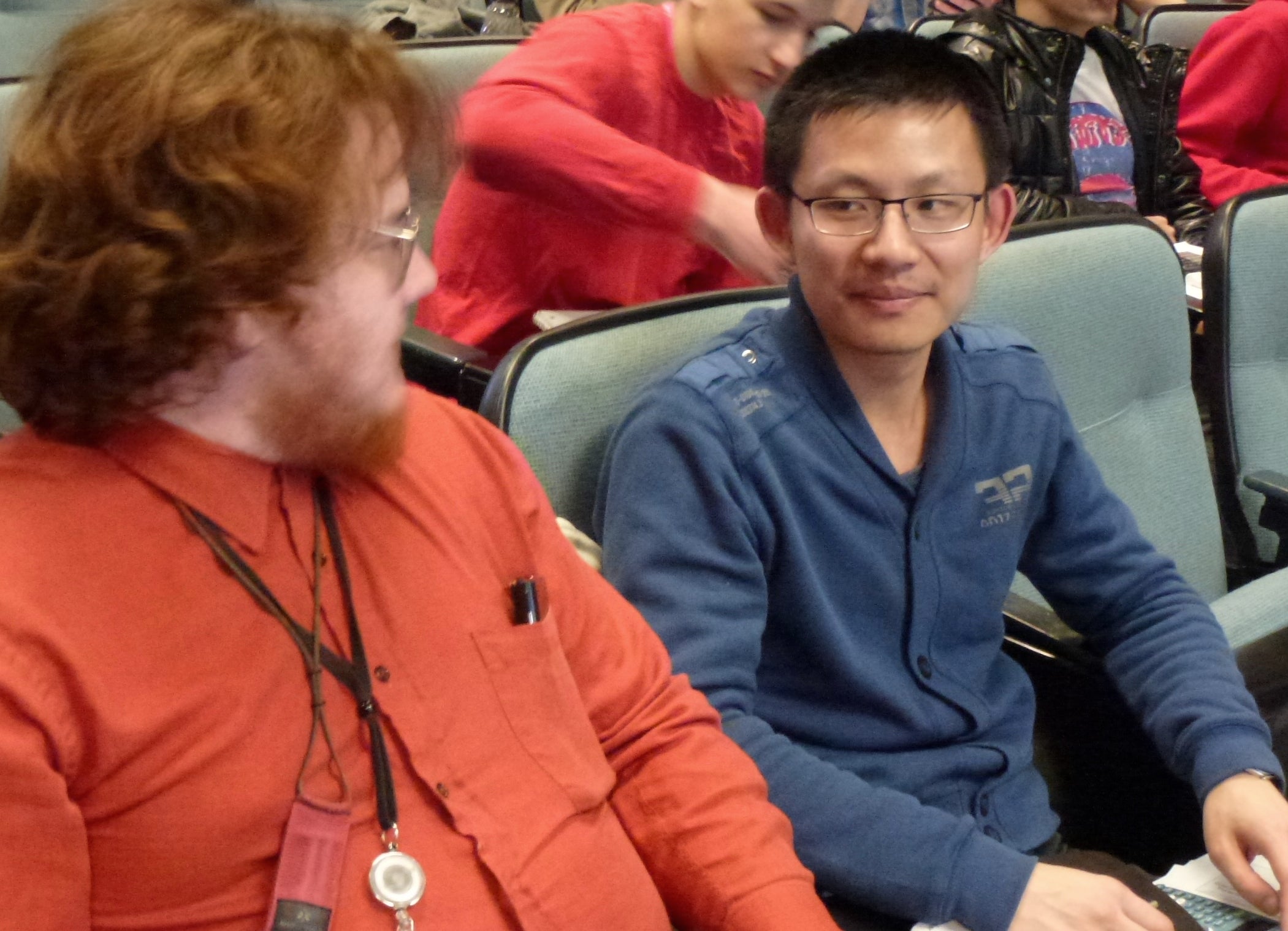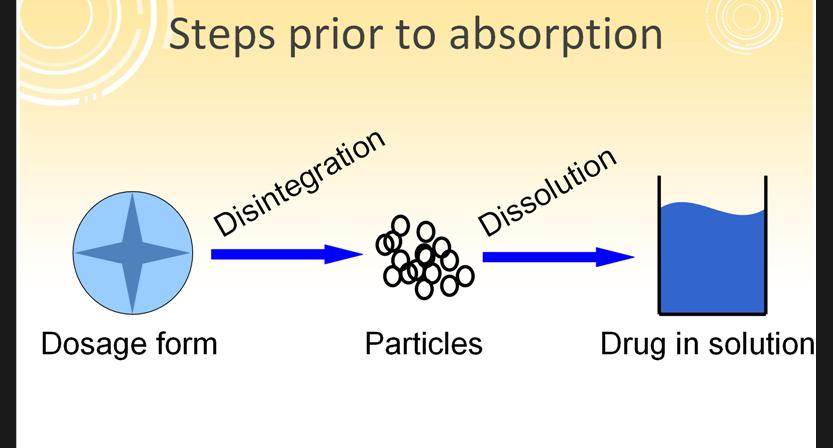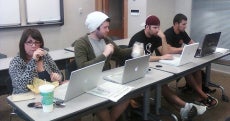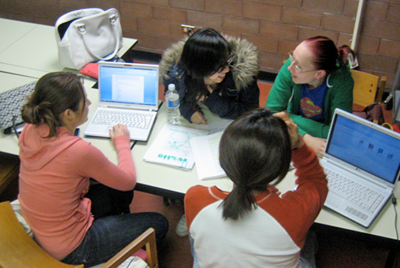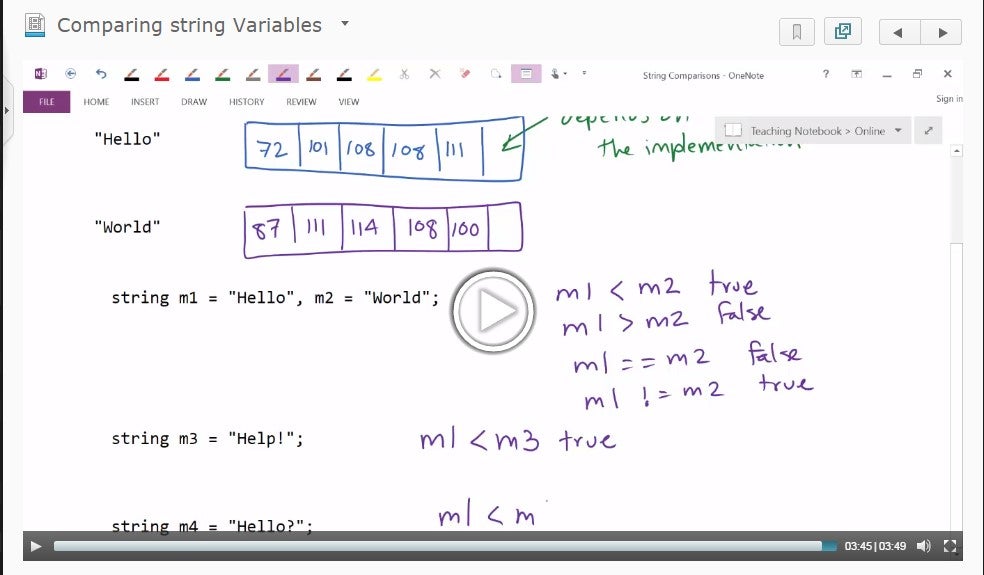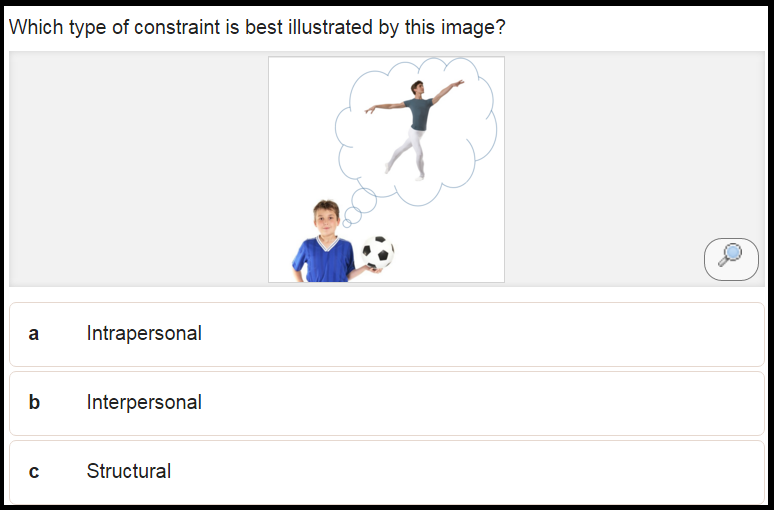Pre-lab lectures have been replaced by
online presentations of ocular examination procedures that students perform in the lab. Students prepare for the lab by completing online modules and are assessed on their level of preparedness through online quizzes. Many science courses are now using instructional presentations and videos to prepare students for lab experiences. Instructor:
Michelle Steenbakkers-Woolley
Flipping a Math course: MATH 136 (Linear Algebra 1 for Honours Mathematics)
Students have access to all the course concepts through online modules that were developed for the fully online version of this course. They prepare for class by watching about 30 minutes of course content before the start of each week and then come to class to work through a set of problems that address the concepts in the online videos. Students work at their own pace, conferring with their classmates and the course instructor as needed. The instructor notes that students ask more insightful questions when his course is taught this way and he ranks this as his most enjoyable teaching experiences to date. Instructor:
Peter Wood.
Supporting problem solving: PHARM 224 (Pharmokinetic Fundamentals)
Class time is reduced as students work independently on foundational course concepts and then work with the instructor on problem solving in a group tutorial. Students access online presentations, do online activities, and receive problem-sets and assignments in the LEARN environment. Once a week there is either a 1.5 hour face-to-face tutorial where the instructor works through an assigned problem set and answers questions, or an hour long "Mighty Minutes" session where the instructor works through difficult concepts. A Help Desk is available every two weeks for students seeking one-on-one help from the instructor. Instructor: Andrea Edginton
See also "What is Blended Learning?", an article in University Affairs featuring Andrea Edginton.
Online drill and practice activities: GER 201 (Intermediate German I)
In this course, in-class, active learning strategies are supplemented with online drill and practice tasks that are completed outside of class. Although these online modules focus mainly on rote memorization, they provide immediate feedback that enhances the students’ understanding of the material they will be later assessed on. Instructor:
Mat Schulze
See also this Teaching Story about Mat Schulze.
Enabling group work in class: PSYCH 340 (Training and Development)
Class time is used for hands-on, authentic group learning activities while foundational course concepts are presented online through recorded lectures (slides with narration). The in-class learning activities help students practice the actual development of training materials and teaching methods, and reinforce the foundational course concepts that students encounter in the online presentations. Students' understanding of course concepts is assessed through weekly online quizzes. Instructor:
John Michela
See an example of John Michela's narrated slides on the topic of "Development and Implementation of Training."
Incorporating hands-on activities into class: GENE 121 (Digital Computation)
In this first year programming course given to Mechatronics and Mechanical engineering students, four hours of traditional lectures have been replaced with a series of short, online, mini-lectures that deliver the basic information needed to code programs. The students’ comprehension of the mini-lectures is assessed in LEARN by online quizzes and class time is used for hands-on coding problems. Instructor:
Carol Hulls
See also this YouTube video in which Carol Hulls explains how blended learning is achieved in this course.
Incorporating learning activities online: Rec 100 (Introduction to Recreation & Leisure)
Modules from the fully online version of this course are reused by integrating them into the on-campus offering of Rec 100. Re-using these online lectures has addressed some of the challenges related to teaching a large class of mostly first-year students such as: familiarizing the students with LEARN functionality and blended learning; helping students learn to manage their time and workload; and giving the instructor the chance to strategically reduce class time at peak busy times of the term. Students interact with five online modules, engaging in readings and viewing lectures. The online modules prepare students for flipped classes that integrate Top Hat activities that assess their knowledge. Instructor: Zara Rafferty
See also this YouTube video in which Zara Rafferty explains how blended learning is achieved in this course.
Preparing for an in-depth field experience: Envs 283 (Ontario Natural History)
Students work independently online over a period of five weeks to prepare for the intensive, hands-on, eight-day field course. Each week, they read one to two chapters from a textbook and complete an online learning activity in LEARN; they then complete a corresponding quiz and short assignment. In the field, they apply their new knowledge and also work on a small research project. Instructor:
Brendon Larson
See also this Teaching Story about Brendon Larson.
More CTE Teaching Stories about blended learning

